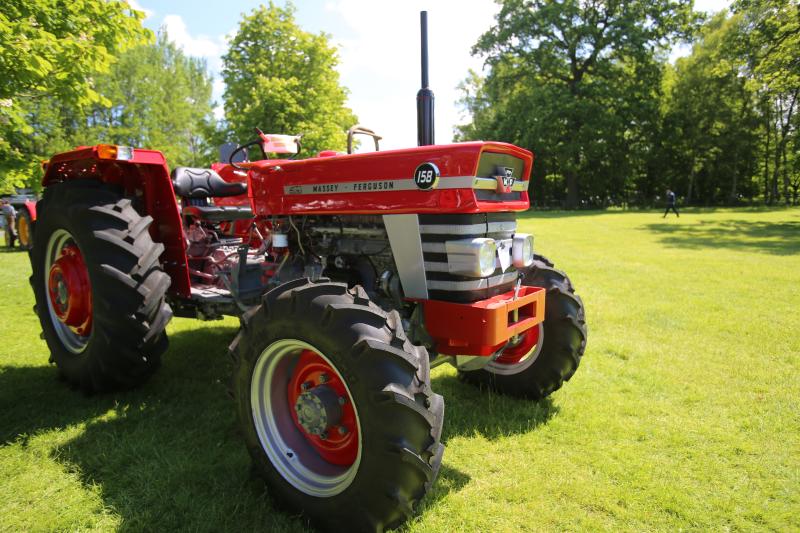Purchasing a second-hand tractor is a great way to save money while still getting a reliable machine for your farm or agricultural needs. However, buying a used tractor requires careful consideration to avoid costly mistakes. In this blog, we’ll explore essential tips to guide you through the process of purchasing a second-hand tractor that will serve you well for years to come.
1. Set a Clear Budget
Before you start browsing for second-hand tractors, it’s important to set a budget. Tractors come in a wide price range depending on their age, brand, condition, and features. Establish a price range that works for you, but also keep in mind that quality and durability are key factors that may justify a slightly higher cost.
2. Research the Tractor Models
There are numerous tractor brands and models available on the market, each offering different features, power, and reliability. Research various brands and determine which ones are most suitable for your needs. Some well-known tractor manufacturers include John Deere, New Holland, Massey Ferguson, and Kubota, but many regional brands might also be popular and affordable.
Pay attention to:
- Horsepower: Choose a tractor with the right horsepower for your farm size and tasks.
- Transmission Type: Consider whether you need a manual or automatic transmission, depending on the ease of use required for your operation.
- Attachments and Features: Check if the tractor can accommodate attachments such as plows, loaders, or mowers.
3. Inspect the Tractor’s Condition
Inspecting the physical condition of a second-hand tractor is vital. Below are some key areas to check:
- Engine: Start the tractor and listen for any unusual sounds. Inspect the oil levels, color, and consistency. Check for any leaks or signs of damage in the engine compartment.
- Transmission: Shift gears while the engine is running to ensure smooth operation. Check for any slipping or grinding noises, which could indicate issues with the transmission.
- Hydraulics and PTO: Test the hydraulic system and power take-off (PTO) to ensure proper functionality. These systems are crucial for operating attachments.
- Tires: Check the tires for wear, damage, and cracks. Worn-out tires may need replacing soon, which can add to the cost of the tractor.
- Brakes and Steering: Test the brakes and steering to ensure they are responsive and in good condition.
4. Review the Tractor’s Service History
A well-maintained tractor is worth more than one that has been neglected. Ask the seller for the tractor’s service history, including any repairs or major maintenance work. Regular maintenance such as oil changes, tire rotations, and replacing filters ensures a longer lifespan for the tractor. If the service records are unavailable or unclear, it may indicate that the tractor hasn’t been properly maintained.
5. Check for Any Signs of Wear and Tear
Even though the tractor may seem to run well, it’s essential to look for subtle signs of wear. This includes:
- Frame or Body Damage: Check for any bent or cracked frames, which could indicate past accidents or misuse.
- Rust and Corrosion: Rust on key parts such as the chassis or engine components can severely affect the tractor’s durability.
- Worn Belts and Cables: Inspect belts, hoses, and cables for cracks, fraying, or wear. These parts may need replacing in the near future.
6. Ask About the Tractor’s Age and Hours of Use
Like any machine, the age of the tractor and the number of operating hours can affect its value and condition. Ask the seller for the tractor’s year of manufacture and the total hours of use, often recorded on the hour meter. A tractor with low hours (generally under 4,000) will likely last longer, though well-maintained older tractors with high hours may still be worth purchasing.
7. Verify the Title and Ownership
Always ensure that the tractor has a clear title and verify its ownership status. Check for any existing liens or outstanding debts on the tractor. If the tractor is part of a leasing or finance arrangement, make sure the seller has settled these payments before you finalize the deal.
8. Take a Test Drive
If possible, take the tractor for a short test run to see how it performs under real operating conditions. Pay attention to how the engine sounds, how the tractor drives, and how smoothly it handles different tasks. This will give you a better understanding of its performance and help you spot any potential issues.
9. Get a Mechanic’s Inspection
If you’re not confident in your ability to assess the tractor’s condition, consider hiring a mechanic who specializes in agricultural machinery. A professional can inspect the tractor more thoroughly and identify any hidden problems that may not be obvious to the untrained eye.
10. Negotiate the Price
Once you’ve inspected the tractor and are satisfied with its condition, don’t hesitate to negotiate the price. If you spot any defects or areas of concern, use these to your advantage when negotiating. A fair price can be agreed upon by factoring in the tractor’s age, condition, and any repairs that might be necessary.
11. Check Local Regulations
Before finalizing your purchase, ensure that the tractor meets any local regulations or requirements for farm machinery. This might include emissions standards or road use laws if you plan to drive it on public roads.
Conclusion
Buying a second hand tractor is a practical choice for many farmers and landowners. However, to ensure that you’re getting a good deal and a reliable machine, you need to do your homework. Follow these tips to make an informed decision and find a tractor that meets your needs without breaking the bank. Whether you’re buying from a dealership or a private seller, a thorough inspection and research are essential for avoiding any costly surprises down the road. Happy farming!
